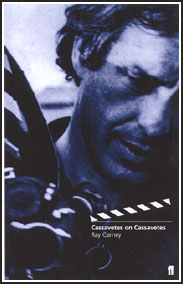
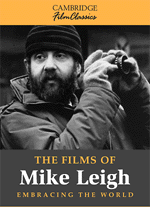
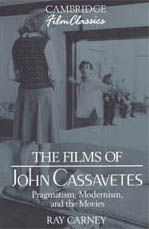
This is only the "To Print" page. To go to the regular page of Ray Carney's www.Cassavetes.com on which this text appears, click here, or close this window if you accessed the "To Print" page from the regular page. Once you have brought up the regular page, you may use the menus to reach all of the other pages on the site.
In the past year or two, I have received so many inquiries about my current writing projects, from people all over the world, that I have decided to post an excerpt from a statement about one of them that I prepared for another purpose. I am working on four or five new books at the same time (as I always am), but this represents the longest and most ambitious of the group. - Ray Carney



What is Art?
John Cassavetes and the Creative Process
Ray Carney
I am the world’s expert on the life and work of American independent filmmaker John Cassavetes (now deceased). I knew him personally and have written many articles, essays, and books about his life and work. (My web site at: www.Cassavetes.com has excerpts from many of my publications and information about my previous work.) For thirteen or fourteen years, when I wasn’t busy with other publishing projects, and for the past seven or eight years, as my principal research interest and focus, I have been working on an extremely ambitious (and gargantuan!) critical/intellectual biography devoted to Cassavetes’ life and work.
I should immediately add that although the project is focused on Cassavetes, and uses his life and work as the basis for many of its conclusions, the manuscript I am completing goes beyond Cassavetes to explore the roots and origins of the creative process in the most ambitious and wide–ranging way of which I am capable. Where does the highest–level art “come from”? What – genetically, biographically, culturally, or emotionally – makes someone an artist? Are works of art, at the highest level (e.g. the work of Shakespeare, Mozart, Picasso, Lawrence) expressions of merely personal feelings and attitudes or do they represent objective statements about the world? To what extent can an artist be aware of what he or she is doing in his or her work? Are the most important and original aspects of a high–level work of art planned and “intended” by their makers or do they emerge in a largely unconscious and unpremeditated way? Do the specifics of personal biography limit artistic expression or empower it? I grapple with these and similar questions, using Cassavetes’ life and work as a case study.
Although there has been a small amount of journalistic and popular interest in Cassavetes’ biography (and a few journalistic and popular pieces have been written about him), little or nothing of a serious, scholarly nature has been published. (And, to compound the problem, the little that has been published is full of errors of both fact and judgment.) As a consequence, the research I did involved beginning more or less at the beginning. I had to do an almost completely original, first–hand investigation of everything I wanted to deal with. The events in Cassavetes’ life, his manuscripts, and his working methods could not be studied in the library or via the internet, and my work could not be facilitated by reading, studying, or synthesizing others’ accounts and ideas. To avoid repeating the errors of popular accounts, I have had to conduct research from the ground up, starting virtually from nothing.
As a consequence, the research phase has been extremely labor–intensive, time–consuming, and (given the need to travel to other cities to do much of it) expensive. To touch on a few areas: One of the first steps in my research involved conducting more than 400 hours of interviews with approximately 150 of Cassavetes’ friends, relatives, co–workers, acquaintances, and others who knew or worked with him at various points in his life. It involved reading and studying approximately 10,000 pages of unpublished and otherwise unavailable manuscripts (some of which were gifts to me from Cassavetes before his death in 1989, but others of which I have had to search out in obscure places or buy from private collectors – and virtually none of which is available in archives or special collections). It has involved traveling to film archives and studying unpublished production stills (photographs taken on the set as Cassavetes was making his movies), and consulting other unpublished material documenting details of his working methods. It has involved traveling to New York, Los Angeles, and other cities to study production records and memos (contracts, schedules, payroll and disbursement paperwork, screening schedules and exhibition contracts, proposals for unproduced or unfinished projects, preproduction meeting minutes and notes, etc.). Little or none of this travel and research has been supported financially. I have not tallied up the exact amount, but would guess that I have spent between 60 and 70 thousand dollars of my own money over an eight to ten year period doing it.
However, let me emphasize that it has not in the least felt like drudgery. This project has been one of the great intellectual adventures of my life (and has contributed immensely to my teaching, even beyond specific courses I have organized, in which I have shown some of this material to my students and used it as the basis for classroom discussions). I have also been incredibly lucky in my research – successful beyond my wildest dreams when I began. I have discovered entire “new” works by the filmmaker: e.g. a copy of the so–called “first version” of Shadows which was believed lost and destroyed for more than 40 years; an alternate, previously unknown “long edit” of one of Cassavetes’ most important films (Faces); a completely new film by Cassavetes that no one knew existed (a discovery that has still not been announced and won’t be until the legal ramifications are resolved); the text of a 450–page novel that Cassavetes wrote but never published while he was editing his film Husbands; and many other previously unknown materials (including “pitch session” notes and “proposals” for unproduced films).
Given the enormous amount of time and effort I have had to invest in original research, rather than waiting until the research was done to begin writing, I wrote the manuscript in bits and pieces, in “rough draft” form, as I did it. That meant that when the research phase was more or less completed, approximately a year or eighteen months ago, I already had a rough manuscript in hand, which I have more recently been revising and editing and rewriting. Approximately one–tenth of it (around 100,000 words) is now in close–to–publishable form….
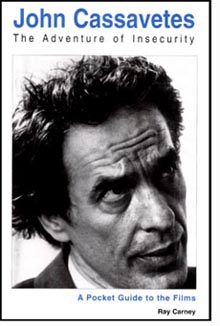
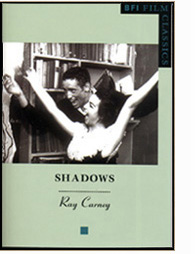

This is only the "To Print" page. To go to the regular page of Ray Carney's www.Cassavetes.com on which this text appears, click here, or close this window if you accessed the "To Print" page from the regular page. Once you have brought up the regular page, you may use the menus to reach all of the other pages on the site.